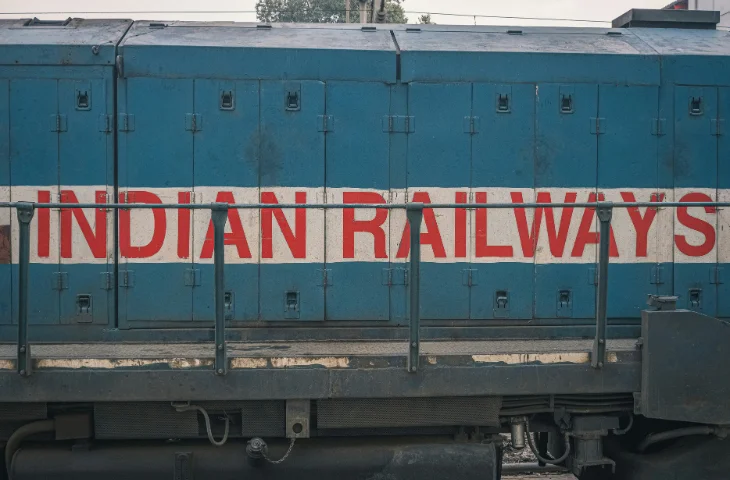Role of Indian Railways: The history of India’s independence is incomplete without talking about the role of railways. While the Indian Railways was introduced by the British mainly to serve their colonial interests, over time, it became a powerful tool for unity, political mobilization, and spreading the message of freedom. This article will help you understand the connection between the Indian Freedom Movement & Role of Railways, highlighting important milestones, events, and the contribution railways made in shaping our struggle for independence.
Indian Freedom Movement and Role of Railways
When the first train ran in India on 16 April 1853, between Bombay (Mumbai) and Thane, it marked the beginning of a new era of transport. However, the British built the railways not for the welfare of Indians, but to exploit the country’s resources, move raw materials to ports, and strengthen their military control.
Yet, what they didn’t realize was that this very network of trains would eventually play a crucial role in uniting people from different regions, spreading nationalist ideas, and fueling the freedom struggle. The railways became the backbone of communication and mass movement during India’s journey towards independence.
Why Did the British Introduce Railways in India?
The British Introduced Railways in Indian mainly for the transportation of cotton, coal, and iron ore. Some main reasons are given below:
- Economic Exploitation: To transport raw materials like cotton, coal, and iron ore from the interiors to ports for export.
- Market Expansion: To bring British-manufactured goods into the Indian hinterland.
- Military Advantage: To move troops quickly during revolts or wars.
- Administrative Control: To strengthen their control over the vast Indian territory.
But in the long run, railways also allowed Indians to travel easily, connect with each other, and share ideas, which later turned into a strong weapon against colonial rule.
Railways as a Tool of National Integration
Before railways, traveling across India was difficult and time-consuming. With the spread of railways, certain barriers were removed.
- People from different regions, languages, and cultures came together.
- Leaders could travel and address large gatherings in multiple provinces.
- Newspapers, pamphlets, and political literature could reach remote corners quickly.
This integration helped Indians to realize that they were part of one larger nation and not just divided provinces under the British.
Role of Railways During the Revolt of 1857
The First War of Independence in 1857 was the first major test for the Indian Railways. The British used trains to move soldiers and weapons quickly to revolt-hit areas. Although the rebels also tried to disrupt railway lines, the lack of coordination and limited access made it difficult.
Still, the revolt showed Indians that railways could also be used for mass mobilization, a lesson that was carried forward in later movements.
Growth of Railways and Rise of Nationalism
By the late 19th century, railways had expanded rapidly in India. At the same time, the seeds of nationalism were growing. Railways played a big role in this phase:
- Formation of Indian National Congress (1885): Leaders could travel across provinces to attend sessions.
- Political Awakening: Speeches, public meetings, and the distribution of nationalist papers became easier.
- Unity Among Indians: Railways broke social and regional barriers as people from different backgrounds traveled together.
Role of Railways in the Indian Freedom Struggle
Railways have always played an important role in the Indian Freedom Struggle. Given below are the main movements and the role of railways in them:
| Movement/Leader | Role of Railways | Key Impact |
| Non-Cooperation Movement (1920–22) | – Used to mobilize large rallies – Boycott of British goods transported by rail – Promoted khadi & swadeshi products | Spread the spirit of non-cooperation across towns & villages |
| Civil Disobedience Movement (1930–34) | – News of Dandi March spread quickly via trains – Activists used trains to organize protests against salt tax & unjust laws | Helped expand the movement from Gujarat to all of India |
| Quit India Movement (1942) | – Protesters targeted stations, tracks, & trains – Slogans like “Do or Die” spread via railways – Trains carried fighters & revolutionary messages | Railways became the backbone of resistance and paralyzed British administration |
| Mahatma Gandhi | Called trains the “conveyer belt of nationalism”, traveled widely to connect with masses | Made Congress a truly mass movement |
| Bal Gangadhar Tilak | Used trains to travel across India, spreading “Swaraj is my birthright” | Built political awakening in remote regions |
| Subhas Chandra Bose | Utilized railway network for underground activities & spreading revolutionary ideas | Strengthened revolutionary nationalism |
| Jawaharlal Nehru & Sardar Patel | Addressed large public meetings enabled by train journeys | Mobilized people across provinces into the freedom movement |
Railways as a Target of Protest
Freedom fighters understood that disrupting railways would weaken the British economy and administration. They used to:
- Damage to railway tracks during protests.
- Stopped trains carrying British goods.
- Attacked railway stations as a symbol of British control.
Spread of Revolutionary Ideas Through Railways
Apart from leaders, revolutionary groups also made good use of railways. Given below are some ideas that spread through Indian Railways:
- Distribution of pamphlets and posters became faster.
- Secret meetings were arranged in railway towns.
- Activists disguised as travelers could move across provinces without much suspicion.
For example, the Ghadar Party and HSRA (Hindustan Socialist Republican Association) often used trains to spread their revolutionary literature.
Railways and the Partition of India
As independence neared in 1947, railways again played a critical role—but this time in a tragic way. The main roles played by Railways in the Partition of India include:
- Trains carried millions of refugees between India and Pakistan.
- Sadly, many of these trains also became sites of communal violence and massacre.
- Yet, railways remained the only mode of mass transport that could handle the huge migration.
This marked both a painful and historic chapter in the role of railways in India’s freedom struggle.
Key Milestones of Railways in the Freedom Struggle
Indian Railways achieved key milestones in the Freedom Struggle. Given below are some important highlights connecting railways with the independence movement:
- 1853 – First passenger train ran in India.
- 1857 – Railways were used during the Revolt of 1857.
- 1885 – Formation of INC; leaders used trains for meetings.
- 1920s–30s – Gandhi’s movements; trains became the backbone of mobilization.
- 1942 – Quit India Movement; railways targeted by protesters.
- 1947 – Railways played a major role in refugee migration during Partition.
Legacy of Railways in Independent India
After independence, the Indian Railways became a symbol of national unity. What once served colonial interests has now become the property of free India, connecting the country and supporting development. The sacrifices made by countless freedom fighters who used or targeted railways became a part of history and pride.
The Indian Railways was more than just a mode of transport during British rule. It was both a colonial tool and a nationalist weapon. While the British introduced it to exploit India, it ended up helping Indians come together, share ideas, and fight for freedom. Leaders like Gandhi, Tilak, Bose, and Patel used the power of railways to reach the masses, while common people used it to unite and resist foreign rule.
FAQs
The British Introduced Railways in Indian mainly for the transportation of cotton, coal, and iron ore
The British used trains to move soldiers and weapons quickly to revolt-hit areas. Although the rebels also tried to disrupt railway lines, the lack of coordination and limited access made it difficult.
Trains carried millions of refugees between India and Pakistan.
Many of these trains also became sites of communal violence and massacre.
Leaders like Gandhi, Tilak, Bose, and Patel used the power of railways to reach the masses, while common people used it to unite and resist foreign rule.
The first train ran on 16 April 1853, between Bombay (Mumbai) and Thane,

Hello! This is Arijit Dutta. I am a skilled Content Writer at Oliveboard with nearly 3+ years of experience in crafting engaging, informative, and exam-focused content for the Railways Domain. With a strong command of language and a keen understanding of learner needs, I contribute significantly to Oliveboard’s mission of delivering high-quality educational resources. Passionate about clear communication and continuous learning, I consistently create content that helps government job aspirants achieve their goals. Outside of work, I enjoy playing cricket and listening to music, which helps me stay balanced and creative in my professional journey.
